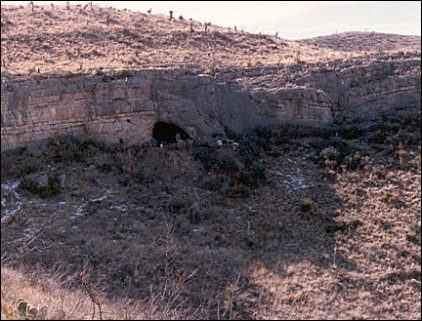

With technologies developed in the last century, we can put real dates to many geologic events. Volcanic flows and many other deposits can be placed within a narrow span of time. For example, the oldest rocks in the Franklin Mountains of El Paso are some 1.2 to 1.4 billion years old, and when you're dealing with something that old, what's a few hundred million years of uncertainty among friends?
But what did geologists do before such dating techniques became
possible? They followed the Law of Superposition, of course. This merely points out
that, barring later disturbance, the oldest sediments occur at the bottom and
successively younger sediments are piled on top of each other. The result is relative
dating, where the sequence of deposition is known, but not the actual years involved.
However, thousands of feet of deposits imply long periods of time. It takes no genius
to understand that even the relatively shallow deposits of the Chihuahuan Desert's
Hueco Bolson, estimated at only around 9,000 feet, required some millions of years for
deposition.

Contributor: Arthur H. Harris, Laboratory for Environmental Biology, Centennial Museum, University of Texas at El Paso.
Desert Diary is a joint production of the Centennial Museum and KTEP National Public Radio at the University of Texas at El Paso.

Breaks of Otero Mesa, southern New Mexico. Layers of limestone are clearly visible. Pendejo Cave, seen here, is an important archeological and paleontological site. Photograph by A.H. Harris.